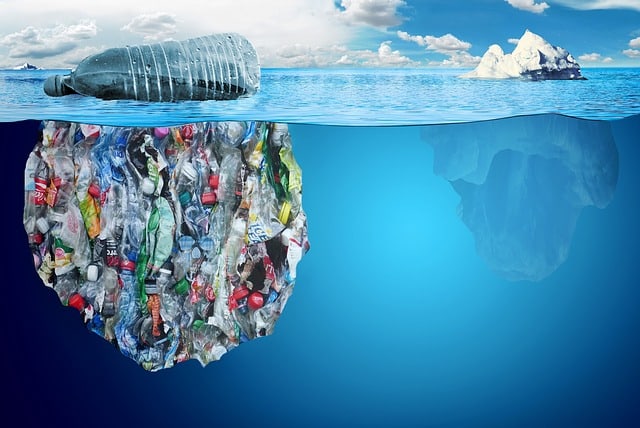Tiny pieces of plastic have invaded the deep ocean – the largest habitat for life on Earth. Be it jellyfish or giant bluefin tuna, its home to everything. These tiny pieces of plastic were so far perceived to be floating at the surface in an unimaginable quantity.
A handful of people only conducted the search for microplastic concentrations at mid-to deep-ocean depths, but in a place like that along the California coast, it is relatively easy. At Monterey Bay, the edge of the continent takes a steep dive into the deep ocean, and white sharks swim just a few miles offshore.
The Monterey Bay Aquarium Research Institute situated on the shoreline installed a multimillion-dollar sophisticated machine called Ventana on the deck of the research vessel Rachel Carson at an MBARI dock for this purpose. “It’s a massive underwater robot,” explains Kyle Van Houtan, chief scientist with the Monterey Bay Aquarium, which collaborates with MBARI. “Robotic arms, a lot of sensors, machinery, lights, video cameras.”
They created a team to send Ventana up to 3,000 feet deep into the Bay in search of plastic.
“The deep ocean is the largest ecosystem on the planet,” says Van Houtan,” and we don’t know anything about the plastic in the deep ocean.” As scientists are already aware of plastic floating on the surface, they have tried to measure its quantity. Out of the many giant eddies in the oceans collecting enormous amounts of plastic waste, the Great Pacific garbage patch is just one.
However, since the amount of plastic found beneath the surface was minimal, Ventana had to make several dives for collecting water samples at different depths. Technicians filtered the water in search of microplastic, the tiny fragments, and fibers that we can hardly see through naked eyes.
“What we found was actually pretty surprising,” Van Houtan says. “We found that most of the plastic is below the surface.” More, he says, compared to the giant floating patches.
Surprisingly they found that the distribution of submerged microplastics is extensive, from the surface to thousands of feet deep.
Furthermore, they found more microplastics when they sampled farther from shore, suggesting that it’s coming from all over not only washing off the California coast.
“We think the California current is actually carrying some of the microplastic debris from the North Pacific Ocean,” he says – it’s like trash washing down off a landfill in the ocean.
The bad part is that the trash gets eaten. The lead scientist on the study Anela Choy, the marine biologist and assistant professor at the Scripps Institution of Oceanography in San Diego says the deep ocean is like a giant feeding trough. “It’s filled with animals,” she says, “and they’re not only moving up and down in the water column every day, forming the biggest migration on the planet, but they’re also feasting upon one another.”
For instance, the deep ocean is filled with sea creatures such as larvaceans that filter tiny organisms out of the water. Despite their size as of tadpole, they’re called “giant larvaceans.” Choy calls them “snot houses,” because they build around themselves a yard-wide bubble of mucus. The mucus captures floating plankton along with plastic. “We found small plastic pieces in every single larvacean that we examined from different depths across the water column,” Choy says. The red crab, another filter feeder, every single one they caught also contained plastic pieces.
Choy also searched higher up the food chain beyond Monterey Bay. In earlier research, she collected creatures called lancetfish in the Pacific, several feet long, with huge mouths and full of saber-sharp teeth. They’re called the “dragons of the deep.”
“We’ve looked now at over 2,000 lancetfish,” says Choy, “and we’ve found that about one in every three lancetfish has some kind of plastic in its stomach. It’s really shocking because this fish actually doesn’t come to the surface as far as we know.” That suggests that plastic has spread through the water column.
Bruce Robison, a senior scientist with the Monterey Bay Aquarium Research Institute being shocked at the quantity of plastic they found, says “The fact that plastics are so pervasive, that they are so widespread, is a staggering discovery, and we’d be foolish to ignore that,” he says. “Anything that humans introduce to that habitat is passing through these animals and being incorporated into the food web” that leads up to marine animals people eat.
Monterey Bay findings appear in the journal Nature Scientific Reports on Thursday representing only a local sample. According to Robison, 70 years of manufacturing plastic may have created a global ocean problem. “We humans are constantly coming up with marvelous ideas that eventually turn around and bite us on the butt,” he says with a dry laugh.
Lately, scientists have just begun to diagnose the extent of that wound.






